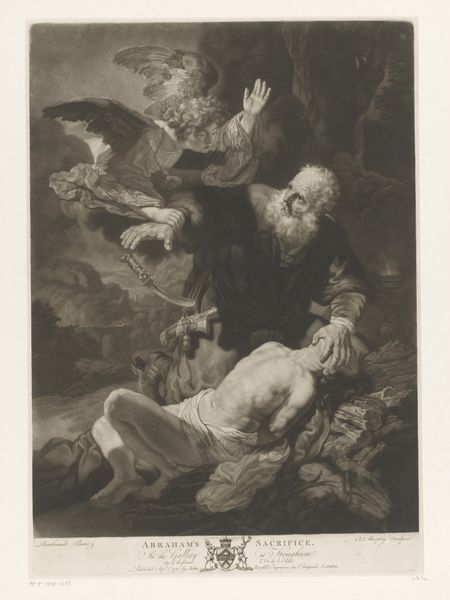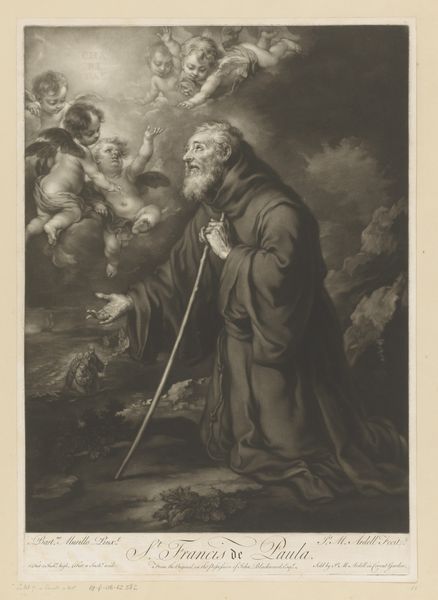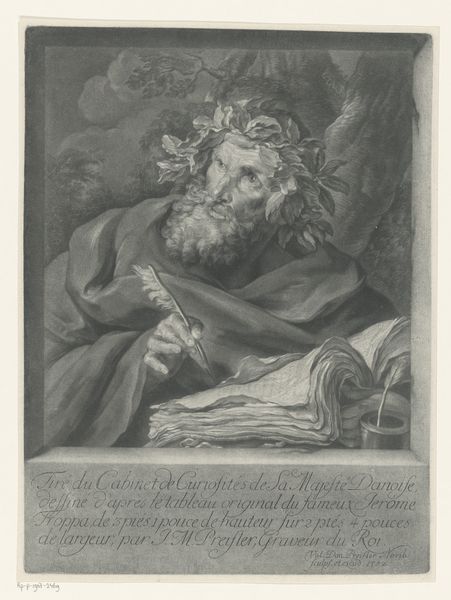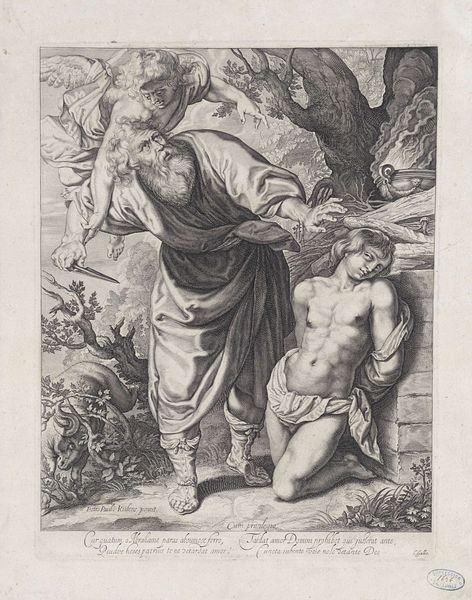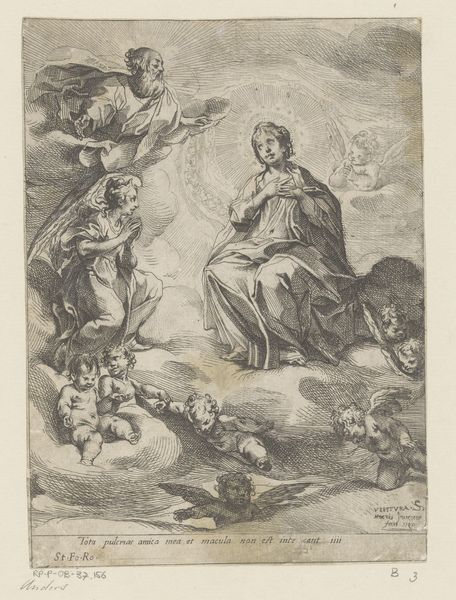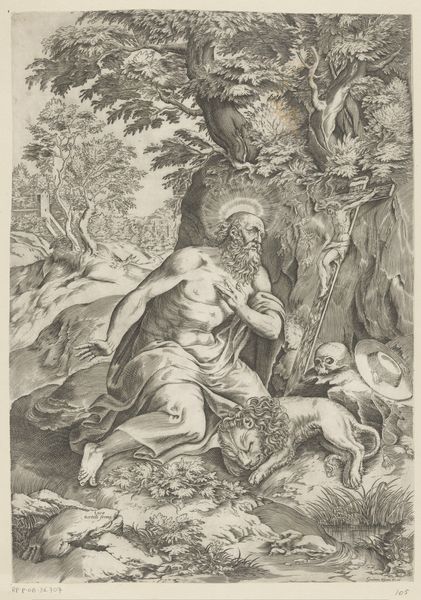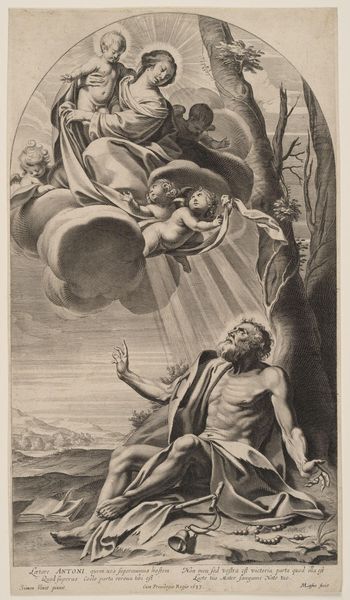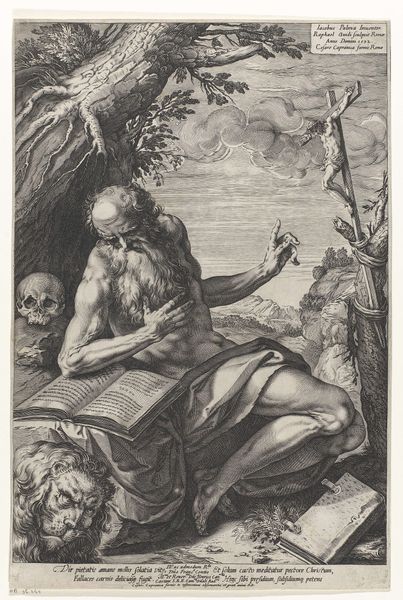
Dimensions: height 525 mm, width 354 mm
Copyright: Rijks Museum: Open Domain
Editor: Here we have Johann Gottfried Haid's 1767 engraving, "The Sacrifice of Isaac," held at the Rijksmuseum. The shading gives the scene a dramatic feel, and the composition is strikingly triangular. What catches your eye about this work? Curator: Formally, it's intriguing. Note how the artist uses light and shadow to create depth and tension. Observe the lines, the way they direct the gaze. The angel's arm is an element of tonal and linear disruption. Consider how the engraver’s marks contribute to the overall impact, not merely as representational devices. Editor: The angel does stand out with its lighter tone compared to the darker Abraham. Is that intentional? Curator: Undeniably. The contrast serves to emphasize the divine intervention and draws attention to the angel’s gesture, disrupting what might have been Abraham's linear trajectory. We see, through light and the lines defining form, the drama heightened. Note the averted eyes of the recumbent Isaac and Abraham looking at the divine messenger. A clear interplay is at work. Editor: So the piece isn't just telling a story; it's about the artist's deliberate choices in shaping the image? Curator: Precisely. The subject serves the structure. It is Haid’s control over tonal value and composition, not merely the depiction of a biblical story, that lends the print its unique power and elevates it beyond simple illustration. Editor: That changes my perspective on the engraving completely! Now, I see beyond the narrative to how it’s been visually constructed. Curator: Indeed. To recognize and appreciate that it is how elements combine is what this exercise invites in viewing artworks such as "The Sacrifice of Isaac".
Comments
No comments
Be the first to comment and join the conversation on the ultimate creative platform.
